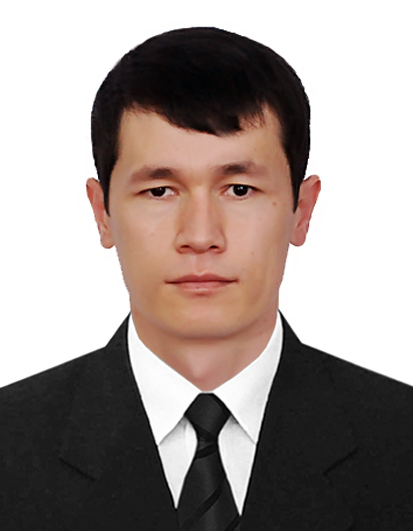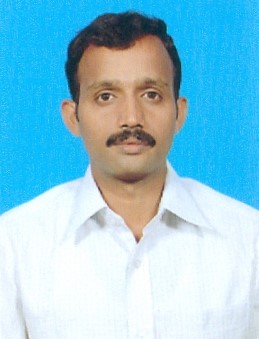Nanotechnology articles list
Привлечение прямых иностранных инвестиций – гарантия внедрения новой технологии в рыночную экономику
в статье анализируются основные причины и критерии иностранных инвестиций, основная роль внедрения инновационных технологий в рыночную экономику. А также роль иностранных инвестиций в модернизацию экономики Узбекистана.
Nano fabrics in the 21st century: a review
Nano technology refers to enhancing the function and delivering the upcoming smart solutions to products at the nanoscale level. It relates to organizing the molecules for altering in dimension and characteristic for improvement like smart fabric. These fabrics could assist producers with the added prominence on a standard of living, visual attraction, and system wanted technological produces. Nanosize particles can unveil unpredicted characteristics dissimilar from the bulk matter. The fundamental principle is that the features could radically be altered after the material is decreased to the nanometer scale. Nanotechnology has multipurpose functions in fabric manufacturing in producing the stain and wrinkles defiance, flame retardant, antimicrobial and antistatic properties, moisture control, ultraviolet protection, and release features. The nanomaterials inside the fabric could influence numerous qualities, comprising reduction, electrical conductivity, flammability, and strength. Nanotechnology has additionally created a significant impression on various application and implementation. Nano-doctored fabrics may advance numerous fabrications as the nano-science progresses further.
A comparative study of social and economic aspect of migration
India is a country of immense diversity. It is home to people of many different racial, languages, ethnic, religious, and national backgrounds. Groups of people in India differ from each other not only in physical or demographic characteristics but also in distinctive patterns of behavior and these patterns are determined by social and cultural factors like language, region, religion, and caste. Apart from behaviour, economic development, level of education and political culture of the people in various social segments differ from region to region. More you can say that economy and cultures have been enriched by the contributions of migrants from round the globe. In an increasingly globalised world, migratory movements is continuously shaping the countries all over the world. Some countries like India and Ireland, which set the example of economic development and social integration, have the positive impact of the migration by globalisation and some countries like USA, which recently witness racism, xenophobia and discrimination have the negative impact on the migrants. It does not mean India do not face fragmentation and USA do not have cohesion. USA have many stories which show successful integration process, that facilitated the lives of immigrant communities, but being a developed country it still suffers from cultural alienation. In these countries, borders are built within borders to create cultural divides that do not allow people to integrate. Recently, this problem has become more prominent due to the rise of terrorism, clash of cultures in the world, leading to the glorification of stereotypes. People are becoming less accepting towards anyone who does not belong to their region. Migration does not stop after people move from one place to another place. The main question start after that ‘now what’ they will do. That is why this topic needs to be discussed thoroughly in order to find better solutions. This paper will begin with an analysis of different approaches to Migration, discuss the target groups for integration policies, provide indicators of the current situation of migrants and proceed to an analysis of integration tools: legislation, social policies and participatory processes. It will focus not only on the impact of migration but also on social integration, mix culture like indo-western culture in a comparative basis.
A comparative study of social and economic aspect of migration
India is a country of immense diversity. It is home to people of many different racial, languages, ethnic, religious, and national backgrounds. Groups of people in India differ from each other not only in physical or demographic characteristics but also in distinctive patterns of behavior and these patterns are determined by social and cultural factors like language, region, religion, and caste. Apart from behaviour, economic development, level of education and political culture of the people in various social segments differ from region to region. More you can say that economy and cultures have been enriched by the contributions of migrants from round the globe. In an increasingly globalised world, migratory movements is continuously shaping the countries all over the world. Some countries like India and Ireland, which set the example of economic development and social integration, have the positive impact of the migration by globalisation and some countries like USA, which recently witness racism, xenophobia and discrimination have the negative impact on the migrants. It does not mean India do not face fragmentation and USA do not have cohesion. USA have many stories which show successful integration process, that facilitated the lives of immigrant communities, but being a developed country it still suffers from cultural alienation. In these countries, borders are built within borders to create cultural divides that do not allow people to integrate. Recently, this problem has become more prominent due to the rise of terrorism, clash of cultures in the world, leading to the glorification of stereotypes. People are becoming less accepting towards anyone who does not belong to their region. Migration does not stop after people move from one place to another place. The main question start after that ‘now what’ they will do. That is why this topic needs to be discussed thoroughly in order to find better solutions. This paper will begin with an analysis of different approaches to Migration, discuss the target groups for integration policies, provide indicators of the current situation of migrants and proceed to an analysis of integration tools: legislation, social policies and participatory processes. It will focus not only on the impact of migration but also on social integration, mix culture like indo-western culture in a comparative basis.
Study of temperature variation in human peripheral region during wound healing process due to plastic surgery
In this paper, investigations are made to analyze the human body temperature during wound healing process due to surgery. Wound is considered after the skin graft. Skin graft is a technique used in plastic surgery. Skin is the first line of defense between the human and environment, it is very susceptible to damage. Internal body or core temperature (Tb) is one of the clinical vital signs along with pulse and respiratory rates. Any disturbance in body temperature will drive complexities in wound healing process. These studies are important in the mechanism of establishing the limits of thermal regulation of human body during the healing process in different situations and conditions. The Finite element method is used to analyze tissues temperature for normal tissues (donor site) and abnormal tissues (tissues after surgery). Appropriate boundary conditions have been framed. Numerical results are obtained using Crank Nicolson Method.
Synthesis, characterization and dielectric properties of k1-xnaxnbo3
The samples of K1-xNaxNbO3 (X=0.4, 0.2, 0) ceramics (PSN) have been prepared by the conventional solid state reaction method and sintering process. The prepared samples have been characterized by XRD. All the prepared samples show orthorhombic structure at room temperature. Dielectric and Electrical properties of PSN system have been investigated in the temperature range 450C-2450C, and at 1MHz frequency. It is observed that dielectric constant, loss tangent and electrical conductivity increases with increasing temperature. Near the transition temperature dielectric constant, loss tangent and electrical conductivity of these samples show anomalous behaviour with temperature.
Metapuf: a challenge response pair generator
Physically unclonable function (PUF) is a hardware security module preferred for hardware feature based random number and secret key generation. Security of a cryptographic system relies on the quality of the challenge-response pair, it is necessary that the key generation mechanism must unpredictable and its response should constant under different operating condition. Metastable state in CMOS latch is undesirable since it response becomes unpredictable, this feature used in this work to generate a unique response. A feedback mechanism is developed which forces the latch into the metastable region; after metastable state, latch settle to high or state depends on circuit internal condition and noise which cannot be predicted. Obtained inter hamming variation for 8 PUF is 51% and average intra hamming distance is 99.76% with supply voltage variation and 96.22% with temperature variation.
3d torus router architecture for efficient network on chip design
Network on Chips are becoming an important aspect in areas of multiprocessor chip design and high performance computing. Reduction in usage of excess amount of hardware in router design without operating all parameters can improve the performance of the system. The practical review of various routers applied in future of networking is carried out in this paper. Fundamental design considerations and various components involved in router design in terms of communication, energy management and power conversion is summarized in detail. A brief comparison of various routers designed previously has been made along with design aspects for 3D Torus router.
Vc router design for power efficient network on chips
The work presented in this paper is analysis and design of power efficient Network on Chips (NoCs). NoC architecture, routers, structure of NoC, topologies and their components has been discussed in this work. The parameters likely speed, latency, static and dynamic power is analyzed. This work found better results as compared to previous works.
Performance analysis of various parameters of network-on-chip (noc) for different topologies
Network on a chip is a concept in which a single silicon chip is used to implement the com-munication features of large-scale to very large-scale integration systems. For high-end System on Chip de-signs, Network on Chip is considered the best integrated solution. NoC has several advantages over dedicat-ed wiring and buses i.e. increased bandwidth, low latency, less power consumption and scalability. Reduc-tion in the latency (end-to-end latency and network latency), loss probability, energy consumption and re-sponse time are the basic parameters which are considered by the researchers for the optimization of the networks-on-chip topologies. In this paper we review the most popular technologies and also some recent topologies for interconnection networks. We study their performance and summarize their strengths & weakness.
Intersection of caste and gender based subjugation
One of the unique features of Indian society is prevalence of caste system which was originated thousands of years back to demarcate the people engaged in different occupation or jobs. Initially it was not much rigid but gradually people belonging to upper castes for their own selfish means to maintain their monopoly made this arrangement hereditary and started treating people of lower castes disgracefully. For preservation of this system, people started controlling their women to prevent inter-caste marriages and the concept of endogamy came up. This robbed away many types of freedom from women. For women belonging to lower castes, this situation is worse as they are doubly subjugated on the basis on caste as well as gender. Men belonging to their own caste treat them as secondary beings. This paper throws light on this intersection. How intersection of these two kinds of inequalities place them at the lowest position in Indian society. Dr. B.R. Ambedkar rises as their leader who all his life worked for empowerment of downtrodden section of society. He argues that education is the primary tool for evading these differences among people. He further emphasizes to adopt the concept of exogamy to break the backbone of Indian caste system and to immediately leave a religion or culture which legitimizes such system of inequality among people of the same land.
Intersection of caste and gender based subjugation
One of the unique features of Indian society is prevalence of caste system which was originated thousands of years back to demarcate the people engaged in different occupation or jobs. Initially it was not much rigid but gradually people belonging to upper castes for their own selfish means to maintain their monopoly made this arrangement hereditary and started treating people of lower castes disgracefully. For preservation of this system, people started controlling their women to prevent inter-caste marriages and the concept of endogamy came up. This robbed away many types of freedom from women. For women belonging to lower castes, this situation is worse as they are doubly subjugated on the basis on caste as well as gender. Men belonging to their own caste treat them as secondary beings. This paper throws light on this intersection. How intersection of these two kinds of inequalities place them at the lowest position in Indian society. Dr. B.R. Ambedkar rises as their leader who all his life worked for empowerment of downtrodden section of society. He argues that education is the primary tool for evading these differences among people. He further emphasizes to adopt the concept of exogamy to break the backbone of Indian caste system and to immediately leave a religion or culture which legitimizes such system of inequality among people of the same land.
Formulation design and evaluation of mucoadhesive buccal patch of ketorolac for the treatment of periodontitis
Ketorolac tromethamine, the non-steroidal anti-inflammatory drug, was formulated into mucoadhesive films to overcome the limitations in the currently available dosage and routes of administration which in sequence will increase patients’ compliance. Films were cast from organic and aqueous solvents using various bioadhesive polymers namely: HPMC E-15, Eudragit RLPO, Eudragit RSPO, Carbopol 934P. The prepared films were subjected to investigation for their physical and mechanical properties, swelling behaviors, in vitro bioadhesion, drug permeation via bovine buccal mucosa, and in vitro drug release. These properties were found to vary significantly depending on the preparation methods, the type of the polymers, and the ratio of addition of both plasticizers (i.e. polyethylene glycol and film forming agent. Formulation F4 is selected for best formulation because it shows the 98.85% drug release at time 6 hr. In addition, this film was subjected to in vitro and in vivo release. The obtained results indicate that the concentration of ketorolac in the oral cavity was maintained above 4.0 µg/ml for a period of at least 6 h. This film shows promising results for using the ketorolac mucoadhesive route of administration topically and systemically, and thus it will be subjected to clinical evaluation in future work.
Effect of cadmium on structure and optical properties of zno nanopowders by sol-gel method
Zn1-xCdxO (x=0, 0.04, 0.06, 0.08) ternary alloys were successfully synthesized by Sol–gel method. The prepared powders were sintered at 800°C for 4hrs. The compositional, structural and optical studies were investigated by SEM equipped with EDS, XRD and UV-Visible Spectroscopy. XRD results were compared with JCPDS data and confirmed the formation of Cd doped ZnO nanoparticles with polycrystalline single phase hexagonal wurtzite structure. The crystallite size was found to decrease from 21 to 17 nm with increase in the concentration of Cd. EDS analysis revealed the existence of Cd content in ternary alloys. From Ultraviolet-visible spectral studies optical band gap vary from 3.21 eV to 3.12 eV with Cd concentration. © 2016 Elsevier Ltd. All rights reserved. Selection and Peer-review under responsibility of International conference on materials research and applications-2016.
Synthesis of pyrazole compounds by using sonication method
A simple method for the synthesis of pyrazoles derivatives carried out by cyclization of cyanide with hydrazine hydrate by using sonication method. All the prepared compounds were characterized by 1H,13C NMR and IR Spectroscopy.
An efficient and green method for the preparation of 2,3 – dihydro-2-phenyl-1 h-naphtho-[1,2-e] [1,3] oxazine by using tannic acid
A Novel route one-pot three-component reaction was developed for the synthesis of 2,3-Dihydro-2-phenyl-1- H-Naphtho-[1,2-e] [1,3] Oxazine by using Substituted Aniline, Formalin & β-Naphthol in the presence of Tannic acid (10 Mol %) as catalyst. The reaction is observed by using TLC, after completion of reaction product is characterized by 1H, NMR, 13C NMR, IR and Mass Spectra.
Nanocoatings in medicine: revolutionizing healthcare through precision and potential
The use of nanotechnology in healthcare and medicine is crucial, particularly for nanocoatings. The therapeutic potential of nanocoatings on medical implants and devices is examined in this chapter. It goes into the ingredients, production processes, and health benefits of nanocoatings. Device functionality and biocompatibility can be enhanced by nanocoatings. They are essential in addressing healthcare issues including cardiovascular stents and orthopedic implants. Additionally, nanocoatings are used in medication delivery systems, tissue engineering, and wound healing. This chapter offers important knowledge on the medical applications of nanocoatings to experts and researchers. Nanotechnology has the potential to alter the medical industry, which would be advantageous for patients.
Most Popular Category
- Pharmacy (258)
- Education and social science (216)
- Pharmacology (211)
- Pharmacognosy (173)
- Business management (147)
- Pharmacology and toxicology (132)
- Education and training (126)
- Pharmaceutical sciences (126)
- Research (121)
- Medicine (111)
- Management (98)
- Health Science (96)
- Biological Sciences (93)
- Computer Science (87)
- Human resource management (83)
- Computer Science Applications (80)
- Engineering (77)
- Accounting and finance (73)
- Information technology (67)
- Public health (60)
 Ikboljon Odashev Mashrabjonovich
Ikboljon Odashev Mashrabjonovich 1.jpg) Ekta Meena
Ekta Meena  Dr.Prashant Kumdale
Dr.Prashant Kumdale  Boopathy Govindarajan
Boopathy Govindarajan